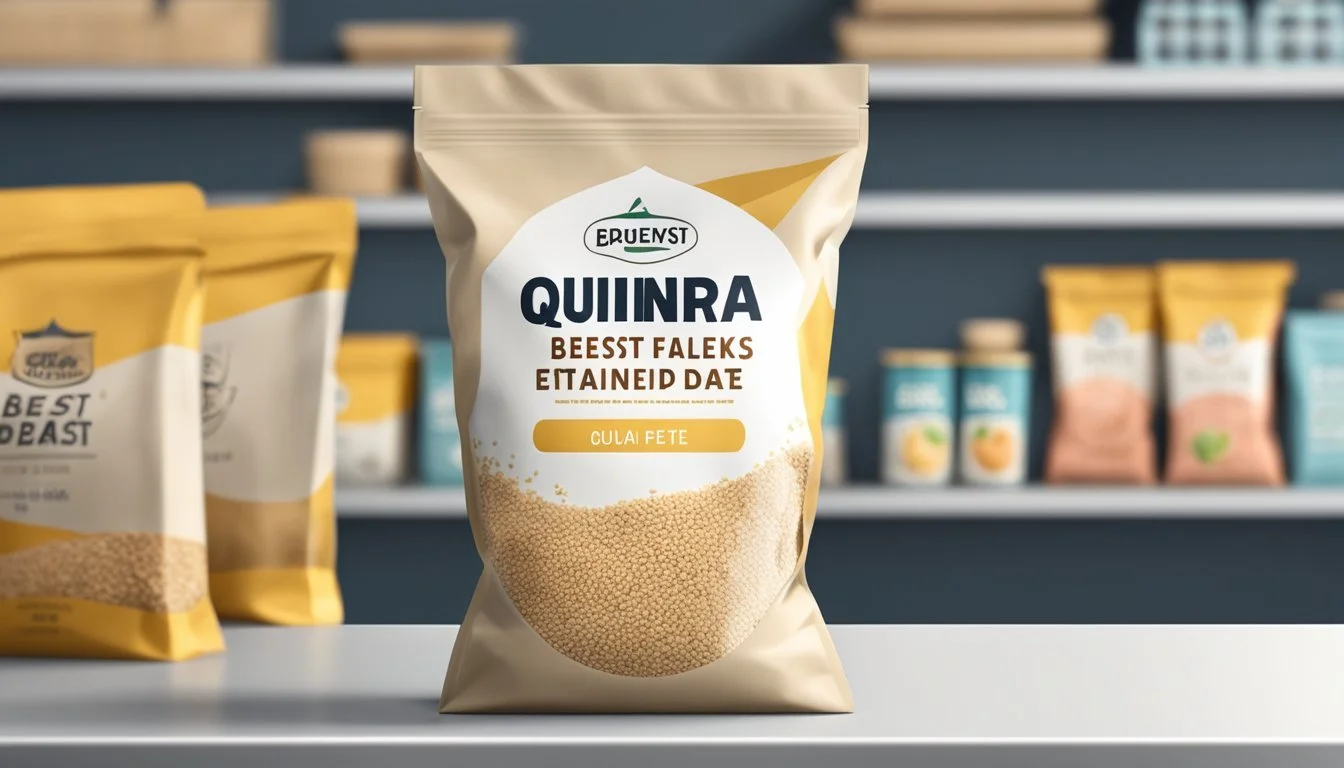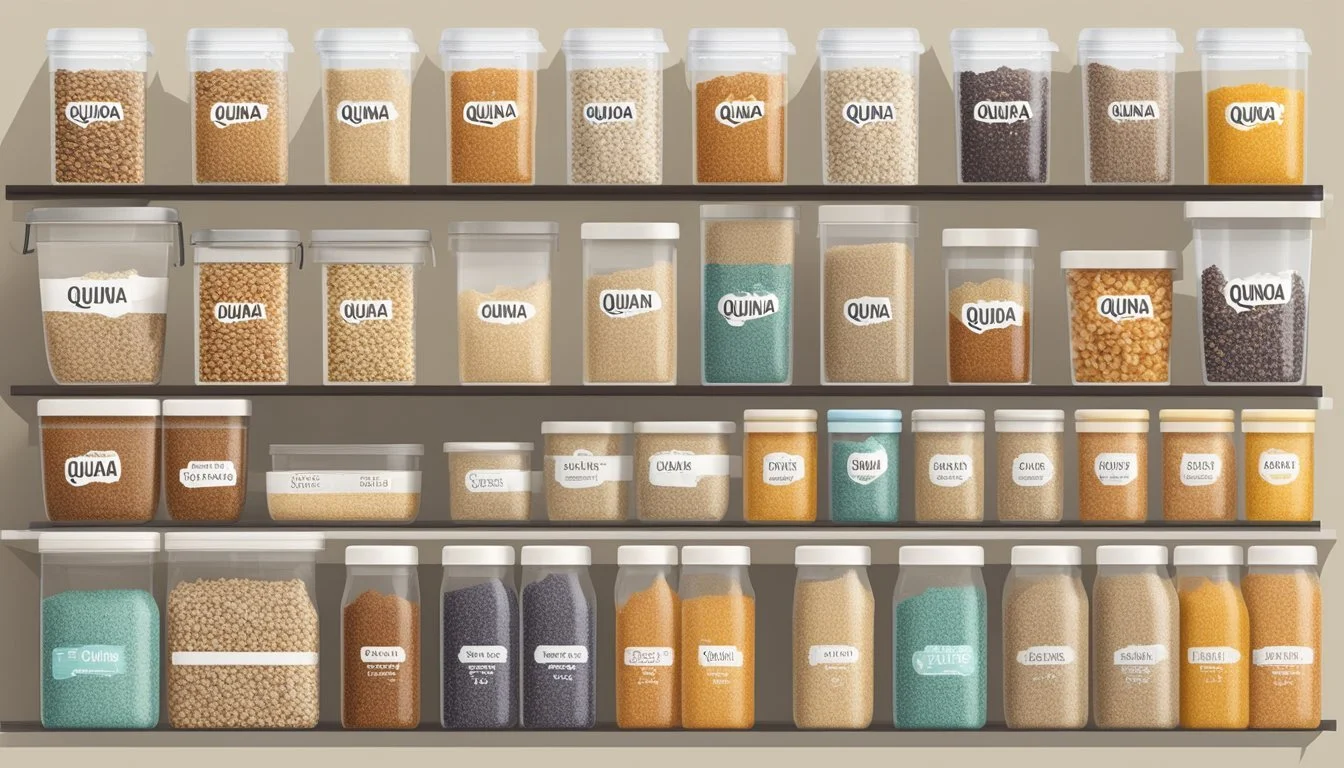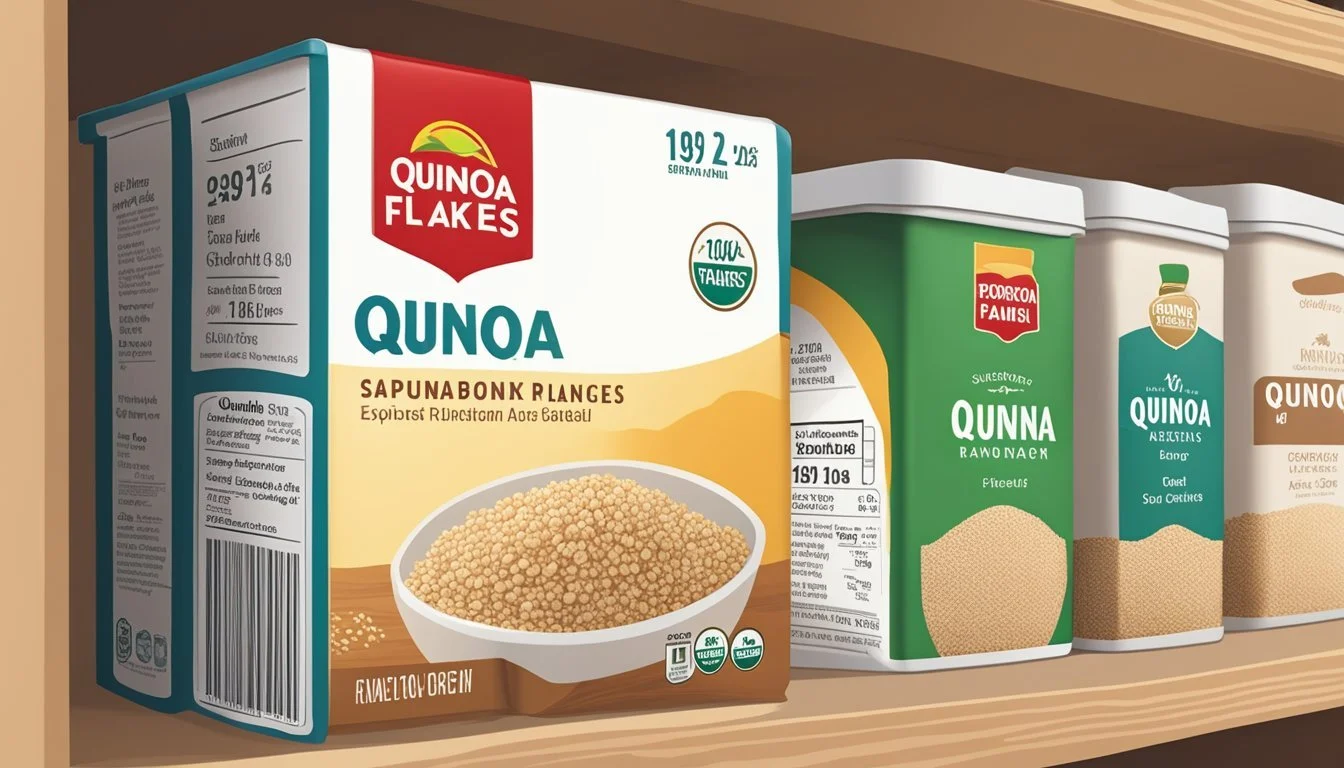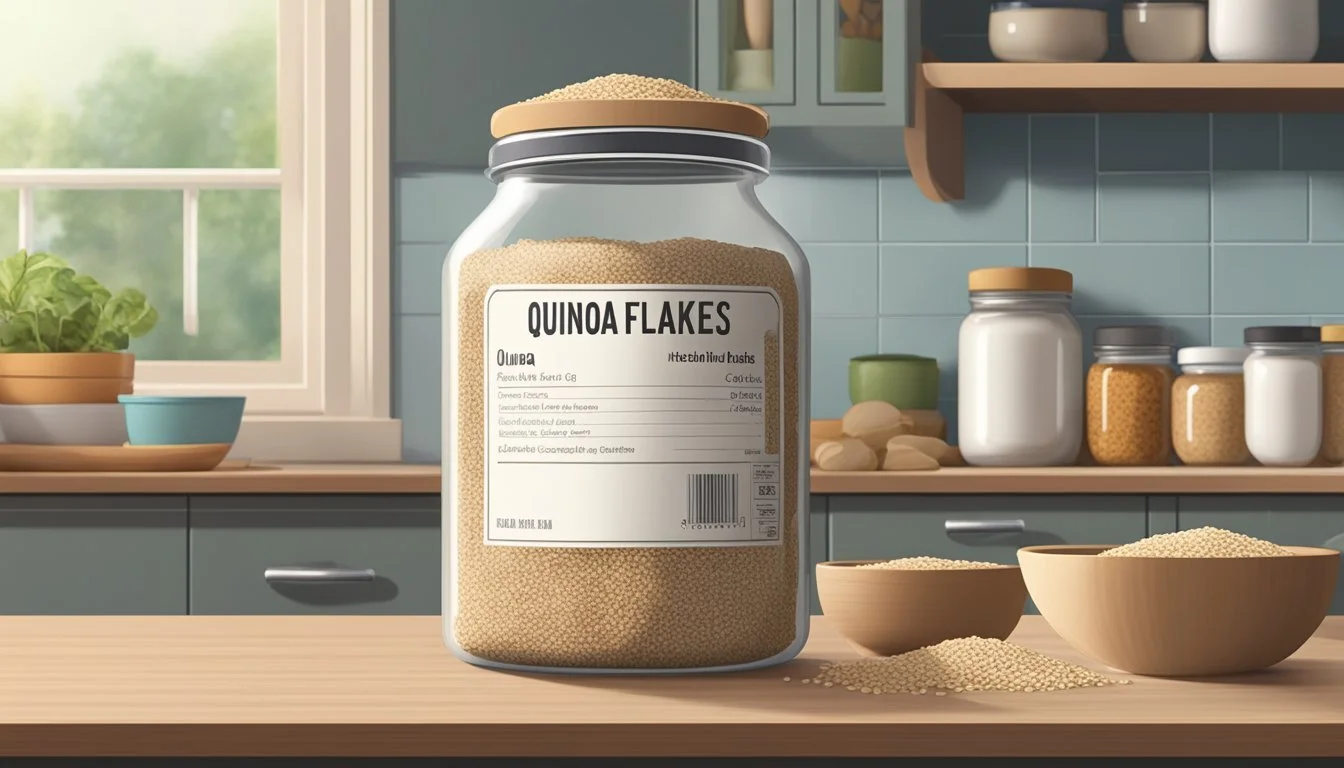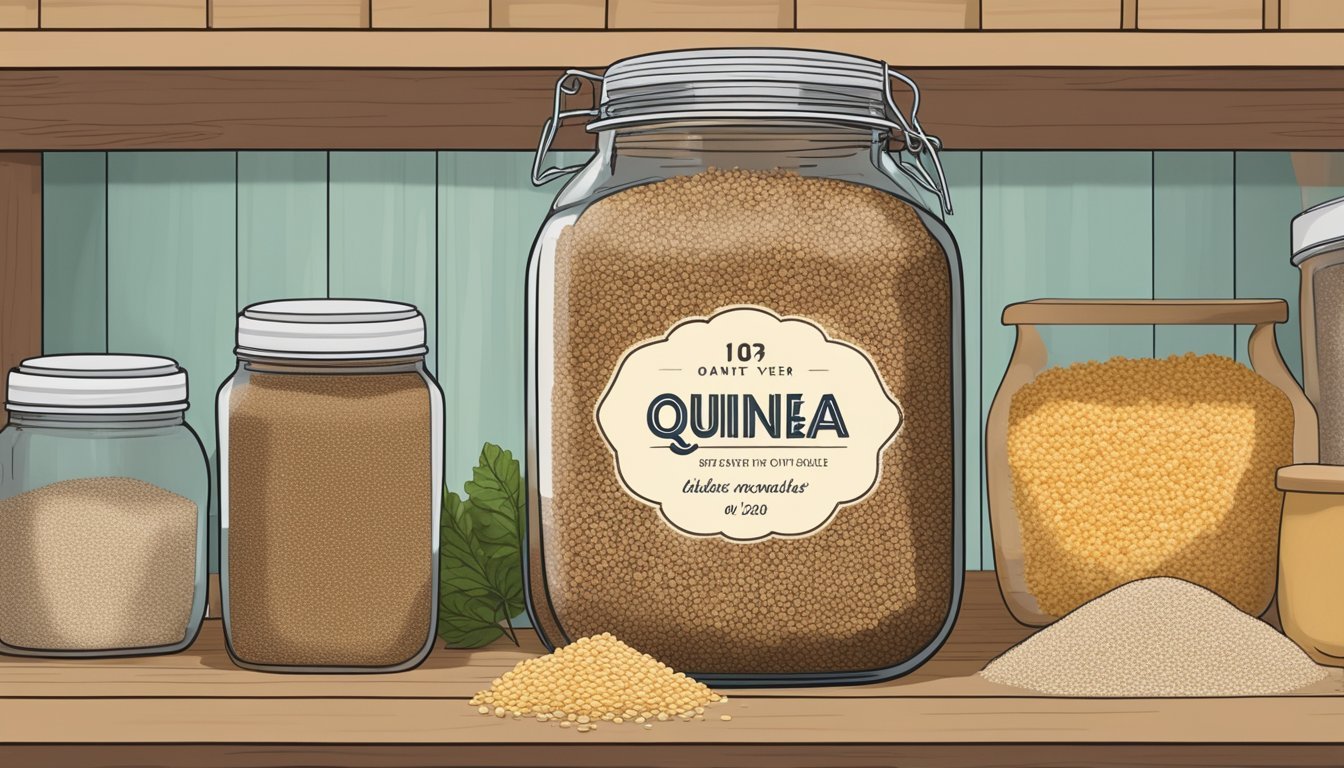How Long Do Quinoa Flakes Last?
Shelf Life and Storage Tips
Quinoa (What wine goes well with quinoa?) flakes are a convenient and nutritious option for a quick meal, prized for their short cooking time and a healthy profile rich in proteins and essential amino acids. As a derivative of whole quinoa grains, quinoa flakes undergo a flattening process that makes them resemble rolled oats, suitable for hot porridges or as an ingredient in baked goods. The shelf life of quinoa flakes is a topic of importance for consumers who wish to maintain the freshness and nutritional value of their food.
Under proper storage conditions, quinoa flakes can maintain their quality for a considerable period. Placed in an airtight container to shield them from moisture and pests, and stored in a cool, dark environment, quinoa flakes can remain fresh for up to six months. It is essential to check the expiration date provided by manufacturers, which serves as a reliable guideline for consumption.
Storage practices play a critical role in preserving the shelf life of quinoa flakes. Factors such as exposure to temperature fluctuations, humidity, and light could hasten the degradation process, leading to a loss of texture and taste, or in the worst-case scenario, the development of spoilage-indicating mold. Knowing how to store quinoa flakes correctly ensures that they remain a quick and healthy option without compromise on quality.
Identifying Quinoa Flakes
Quinoa flakes are the pressed form of quinoa, a superfood that originated in South America and was a staple in the diet of the Incas. Recognizable by their flat and flaky appearance, they are created by steam-rolling the whole quinoa seeds. Quinoa flakes resemble rolled oats and are commonly utilized as a quick-cooking alternative to the whole seed.
Nutritionally, quinoa flakes are a powerhouse providing a range of essential nutrients. They serve as an excellent source of plant-based protein containing all nine essential amino acids. Here's a brief nutrition breakdown:
Protein: High-quality, complete protein, important for muscle repair and growth
Fiber: Aids in digestive health and can contribute to a feeling of fullness
Iron: Essential for blood health and transporting oxygen throughout the body
Calcium and Magnesium: Contributes to bone health
B-Vitamins: Play a vital role in energy metabolism within the body
Antioxidants: Help in fighting off free radicals, potentially lowering the risk of disease
Quinoa flakes maintain the same nutrient profile as whole quinoa but cook much quicker, making them a convenient choice for fast-paced lifestyles. They are naturally gluten-free, making them a safe option for those with gluten sensitivities or celiac disease.
Mostly used in breakfast dishes, baking, or as a thickener in soups and stews, their mild, slightly nutty taste complements a variety of flavors. Given their versatility, quinoa flakes are an excellent ingredient to incorporate into a balanced, nutrient-rich diet.
Factors Affecting Shelf Life
The shelf life of quinoa flakes is predominantly influenced by environmental factors and storage conditions. By controlling these variables, one can extend the longevity of quinoa flakes.
Temperature Influence
High temperatures can accelerate the deterioration of quinoa flakes, speeding up the processes that lead to spoilage. Storing quinoa flakes in a cool, dry place helps preserve their quality. They should ideally be kept at room temperature or below to maintain freshness for a longer duration.
Moisture and Humidity
Quinoa flakes are sensitive to moisture and humidity. These conditions can lead to microbial growth and a compromised product. It is essential to store quinoa flakes in an airtight container to shield them from moisture, ensuring a stable shelf life. Humidity levels should be kept as low as possible within the storage environment to prevent clumping and potential spoilage.
Exposure to Oxygen and Light
Exposure to air can lead to oxidative damage, while light can cause degradation of certain nutrients within the quinoa flakes. Oxidation can be minimized by using oxygen-free packaging or vacuum-sealed bags. To prevent the harmful effects of light, quinoa flakes should be stored in opaque containers away from direct sunlight.
Storage Solutions
Proper storage extends the shelf life of quinoa flakes, with different methods suitable for varying durations. Each storage method should consider factors like temperature, moisture, and container types to maintain quality.
Pantry Storage
For pantry storage, quinoa flakes should be kept in a cool, dry place away from direct sunlight. An airtight container is essential to prevent moisture and pests. This method is ideal for short-term storage, typically recommended until the best by date on the packaging.
Refrigeration
Storing quinoa flakes in the refrigerator may increase their shelf life beyond the pantry's limitations. A sealed airtight container is crucial to prevent moisture. This method helps in keeping the flakes fresh for a few months past their labeled best by date.
Freezing Quinoa Flakes
For long-term storage, freezing is an effective option. One should ensure quinoa flakes are placed in freezer-safe airtight containers or bags to protect from freezer burn. Labeling with the freezing date can help track how long they have been stored. Thawed quinoa flakes should be kept refrigerated and used promptly.
Determining Freshness
Ensuring the freshness of quinoa flakes is essential to both their taste and nutritional value. This section outlines specific methods to assess if the quinoa flakes are still fresh or if they have started to spoil.
Visual and Texture Checks
One first assesses quinoa flakes' freshness by inspecting their appearance and texture. Fresh quinoa flakes should have a uniform color and be free from any visible mold. If discoloration, damp spots, or mold are present, it signifies spoilage. In terms of texture, fresh quinoa flakes are typically dry and flaky; any clumping may indicate exposure to moisture, leading to potential spoilage.
Smell and Taste Signs
The scent of quinoa flakes can be a clear indicator of their condition. Fresh flakes typically have a mild, nutty smell. If one detects a bad smell, such as a rancid or sour odor, it is an indication that the quinoa flakes have gone bad. A taste test, although performed cautiously, can further confirm spoilage. Any bitter or off flavors suggest that the quinoa flakes are no longer suitable for consumption.
Shelf Life Guidelines
When discussing shelf life, it’s important for consumers to differentiate between uncooked and cooked quinoa (how long does cooked quinoa last?) flakes. The shelf life varies greatly between these two states, and proper storage is essential to maximize longevity.
Uncooked Quinoa Flakes
Uncooked quinoa flakes can last a significant amount of time when stored properly. In a cool, dry place, away from direct sunlight, uncooked quinoa flakes maintain quality for:
Pantry: approximately 2-3 years
It's imperative to note that while quinoa flakes may remain safe to eat past this period, their quality may decline. They should be kept in an airtight container to protect them from moisture and pests.
Cooked Quinoa Flakes
Quinoa flakes that have been cooked have a much shorter shelf life due to the presence of moisture which can encourage bacterial growth. The guidelines for cooked quinoa flakes are:
Refrigerator: 5-7 days
Freezer: up to 1 month
For food safety, cooked quinoa flakes must be stored in airtight containers within two hours of cooking. This prevents bacterial contamination and preserves freshness. Rapid cooling prior to refrigeration can help maintain food quality.
Recognizing Spoilage
When examining quinoa flakes for spoilage, one should be vigilant for several indicators. It is essential to acknowledge that quinoa, like any other food product, can go bad over time due to exposure to bacteria and mold which thrive in suitable conditions.
Visual Signs: One should inspect the quinoa flakes for any presence of mold, which may appear as fuzzy spots in various colors. Additionally, look for any unusual changes in color or texture.
Mold: Fuzzy growths of any color
Discoloration: Dark spots or faded grains
Odor: Quinoa flakes typically have a subtle, nutty scent. A notable bad smell is a clear sign that the quinoa has gone bad. If the flakes emit an off or rancid odor, they should not be consumed.
Texture: Fresh quinoa flakes are dry and free-flowing. Any form of clumping indicates that they have absorbed moisture, which could lead to bacterial growth and spoilage.
Taste Test (conducted with caution): If the quinoa flakes pass the visual and smell test, a small taste can confirm their condition. Spoiled quinoa will taste sour or off.
Storage Considerations: To minimize the risk of spoilage, storing quinoa flakes in a cool, dry place in an airtight container is advisable. This reduces exposure to moisture and contaminants.
In summary, to determine if quinoa flakes have spoiled, they should be inspected for mold, discoloration, bad smell, or clumping. Any of these signs would indicate spoilage, and one should discard the flakes to avoid potential health risks.
Preventing Contamination
When it comes to prolonging the freshness of quinoa flakes, preventing contamination is key. Food safety should be a top priority from the moment of purchase to the final serving.
Proper Packaging: Quinoa flakes should be kept in their original packaging if it's unopened and undamaged. Once opened, transferring the flakes into an airtight container is crucial to shield them from external pollutants and maintain quality.
Airtight Containers: Utilize containers that seal properly to barricade against contaminants. This practice also helps retain the flakes' texture by preventing moisture ingress.
Controlled Humidity: Excess humidity can lead to a buildup of moisture, which might spoil the quinoa flakes. It's important that one stores them in a cool, dry place. Silica gel packets can be placed in the storage area to absorb any excess moisture.
Silica Gel Packets: These can be a useful tool in your storage to actively control moisture levels.
Pest-Free Storage: Pests pose a risk to the purity and edibility of quinoa flakes. Ensuring that the storage area is clean and free from pests will safeguard the flakes from potential contamination.
Regular Storage Checks: Periodically inspecting the storage space and the quinoa flakes can catch any early signs of pest intrusion.
Storing at Room Temperature: Ideally, quinoa flakes should be stored at room temperature, making it less hospitable for bacterial growth. However, one must ensure that this space is not prone to drastic temperature changes, which could compromise the product's integrity.
By following these guidelines, one can significantly reduce the risk of contaminating quinoa flakes, thereby ensuring they remain safe to consume and retain their quality for longer periods.
Nutritional Considerations
Quinoa flakes are recognized for their robust nutritional profile. They are a derivative of quinoa seeds, which are hailed as a nutritious superfood. These flakes are a convenient and quick-cooking form of quinoa that preserves much of the original seed's nutrient content.
Nutrients per Serving:
Calories: Moderate
Protein: High; contains all essential amino acids
Fiber: Rich in dietary fiber
Fats: Low in fat with a presence of beneficial unsaturated fats
Nutrient Benefit B-Vitamins Supports energy metabolism Iron Essential for oxygen transport Calcium Important for bone health Magnesium Involved in over 300 body processes
Quinoa flakes not only provide essential macro-nutrients such as protein and fiber but also carry an impressive array of vitamins and minerals. They are particularly noted for their complete protein, meaning they contain all nine essential amino acids necessary for human health. This feature is relatively rare in plant-based foods and makes quinoa flakes an excellent choice for vegetarians and vegans.
Additionally, they are a good source of iron and magnesium, essential minerals for bodily functions. Iron plays a pivotal role in the formation of hemoglobin, while magnesium is crucial for muscle and nerve function, among other processes. Quinoa flakes are also a source of B-vitamins and calcium, contributing to overall well-being.
In summary, quinoa flakes are not only a versatile and easy-to-prepare option for meals but also provide substantial nutritional benefits supporting various aspects of health.
Culinary Uses
Quinoa flakes offer versatility in cooking, suitable for both sweet and savory dishes. They cook quickly, making them an ideal choice for fast and nutritious meals.
Cooking Quinoa Flakes
Quinoa flakes can be prepared similarly to oatmeal. For cooking, one should combine quinoa flakes with twice the volume of water or milk. Bring the liquid to a boil, then reduce the heat to a simmer, cooking the flakes for about 5-7 minutes, or until they have absorbed the liquid and reached a soft, fluffy texture. Quinoa flakes are well-suited for individuals seeking a quick-cooking, wholesome grain option.
Recipe Ideas
Quinoa flakes are an excellent foundation for a variety of recipes:
Breakfast cereal: Mix with nuts, dried fruit, and a dash of cinnamon for a nutritious start to the day.
Baking: Substitute for quinoa flour (how long does quinoa flour last?) to create a unique texture in baked goods or as a binding agent in vegan baking.
Soups and stews: A great thickener that adds nutrition and substance.
Health bars: Combine with chia seeds, nuts, and honey, then bake to form energy bars.
Savory dishes: Incorporate into patties with corn, tomatoes, and spices, pan-seared with olive oil.
Quinoa flakes can be a creative substitute in most recipes calling for traditional flakes or grains, offering a protein-rich and gluten-free alternative. For long-term use, one can freeze cooked quinoa to preserve its freshness, ensuring a convenient supply for future culinary creations.
Additional Information
Understanding the nuances of quinoa flakes and their preservation is crucial to maintaining both their quality and nutritional value.
Types of Quinoa
Quinoa comes in multiple varieties, including white, red, and black quinoa, each with a distinct texture and flavor profile. White quinoa is the most common and has the mildest taste. Red quinoa holds its shape well during cooking, making it suitable for cold salads. Black quinoa offers a crunchier texture and earthier flavor. There is also quinoa flour, which is ground from quinoa seeds and used as a gluten-free baking alternative.
White Quinoa: Mild flavor, fluffy texture when cooked.
Red Quinoa: Firm texture, nutty taste, suitable for salads.
Black Quinoa: Crunchy texture, earthier taste.
Quinoa Flour: Used as a gluten-free baking substitute.
Handling Leftovers
When dealing with leftovers, it's important to minimize their exposure to air to reduce the risk of oxidation, which can spoil the natural oils and fats within the quinoa flakes. Leftover quinoa should always be stored in an airtight container and refrigerated to maintain freshness.
Minimize Air Exposure: Store in airtight containers.
Refrigeration: Keeps leftovers fresh for consumption.
Long-term Storage Advice
For long-term storage, one must consider the larger surface area of quinoa flakes compared to whole quinoa seeds, which can make them prone to spoilage sooner. Sealed in airtight containers and placed in a cool, dark location, quinoa flakes can last for several months. When freezing, ensure it is tightly packed to reduce freezer burn.
Airtight Containers: Essential for maintaining quality.
Cool, Dark Location: Preserves nutritional value and extends shelf life.
Freezing: Pack tightly to prevent freezer burn and extend shelf life for up to 12 months.


